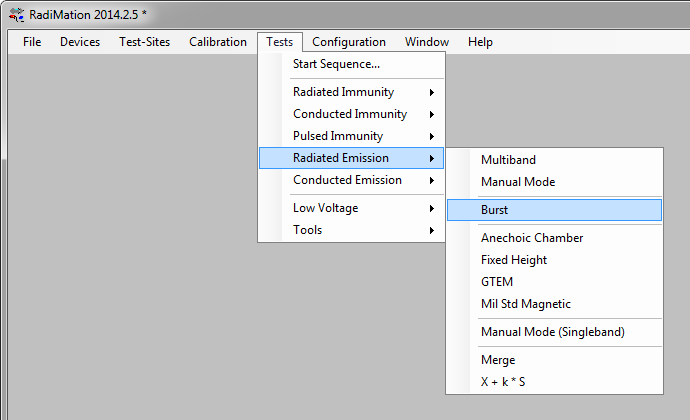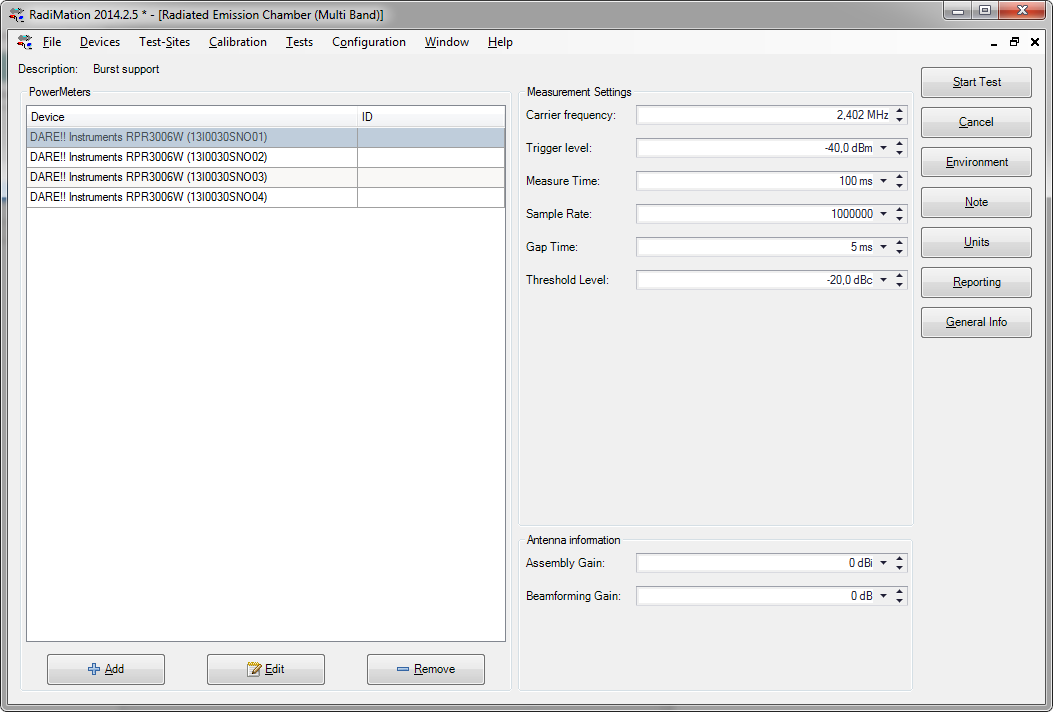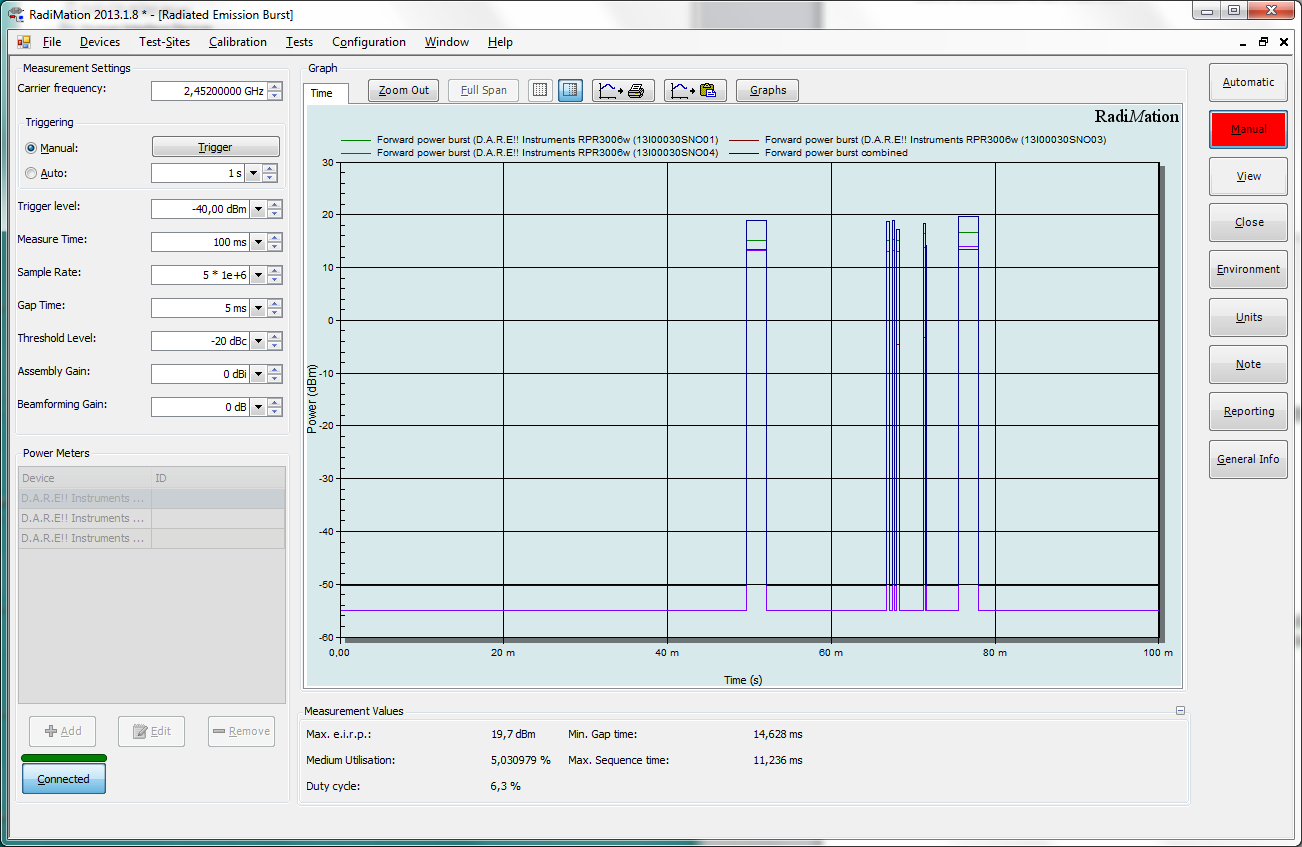RadiMation Application Note 102: Difference between revisions
No edit summary |
No edit summary |
||
| Line 16: | Line 16: | ||
Press {{ScreenElement|New}} to create a new [[TSF]]-file. | Press {{ScreenElement|New}} to create a new [[TSF]]-file. | ||
The {{WindowTitle|Radiated Emission Burst TSF}} window will now be opened in which the burst test can be configured. | |||
[[File:RadiatedEmissionBurstTSF.png]] | [[File:RadiatedEmissionBurstTSF.png]] | ||
Revision as of 14:08, 2 December 2014
Performing an ETSI EN300328 MIMO measurement[edit]
This application note explains how a MIMO measurement can be performed with RadiMation® Free as it is described in the ETSI EN300328.
It is assumed that device drivers for the used powermeters are already configured in the configuration of RadiMation®. Otherwise see Device driver configuration in Chapter 2 of the RadiMation® Manual.
Create a new EUT-file by selecting from the menu bar:
-
 File
File
-
 New
New
-
 EUT
EUT
-
-
-
Specify a filename for the new EUT-file and select OK. A new EUT-window will now be opened.
To start the Burst measurement select from the menu bar:
-
 Tests
Tests
-
 Radiated Emission
Radiated Emission
-
 Burst
Burst
-
-
-
Press New to create a new TSF-file.
The Radiated Emission Burst TSF window will now be opened in which the burst test can be configured.
- Press the + Add button to add all the power meters to your test.
- Enter the correct parameters on the right hand side:
| Different types of devices are available in RadiMation®. Only the created device drivers of the type that is selected for Device Driver Type will be shown in the list |
| Shows a list of all the available device drivers for the selected Device Driver Type |
| Creates a new RadiMation® device driver for a specific device. It is only possible to create a new device driver for the selected Device Driver Type. |
Press Start Test to start the measurement test with multiple power meters.
Enter a filename to save the TSF-file, so it can be used again in the future.
The measurement is then started and the results are shown in the graph.
During the measurement, all parameter such as Max e.i.r.p, medium utilisation, Duty cycle, Min Gap time and Max. Sequence time and RMS are calculated and shown. When the measurement is finished configuration parameters can be changed if desired, and a new measurement can be triggered by pressing the Trigger button.
The measurement results can be saved into the created EUT file by pressing the Close button.


